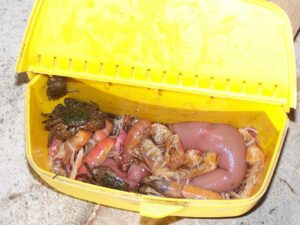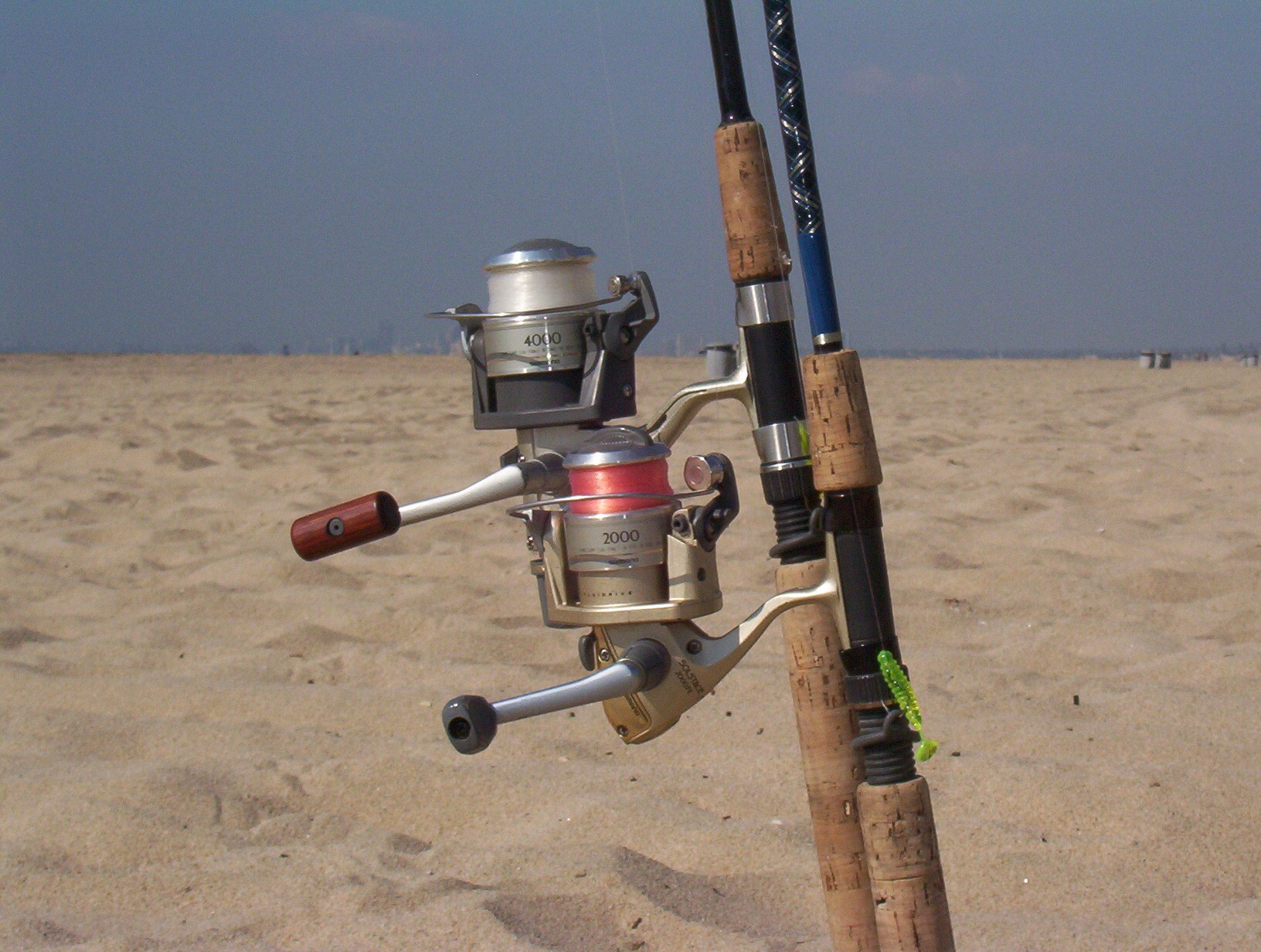Each January I take time to look forward into the New Year, set a goal and make a plan to figure out how I’m going to make it happen. One of my first tasks is to begin planning my year of surf fishing. Time management not only helps us get important things done but it also helps us catch more fish.
Now I know that may seem a bit crazy but I always start the year by looking into the tides and moon phases so I know exactly what days or period of days will give me the best chance at catching fish. This helps me plan in advance what days will be blocked out on my calendar and what days I’m open to visit Aunt Matilda.
Preparing before you go to the beach will make you so much more successful in the surf. It will also leave you much more relaxed and so focused on the bite that not a single fish will outsmart you. Careful preparation will allow you to be fully prepared before you go to the beach and give you twice as much time to fish.
Check the beach conditions
Beginning in January and every single time before I go fishing I begin with looking at the conditions, including wind, tide and moon phase. I visit swellwatch.com. You should too. Once it loads up on your browser hover over “world” and click on “North America West Coast”, then “Southern California”.
You will now be on the page showing seven days of coastal weather. Use the tabs  at top to look at swell size and wind speed. This information will let you know the size and direction of the upcoming surf. What speed and direction the wind will blow. Both very important for surf fishing.
at top to look at swell size and wind speed. This information will let you know the size and direction of the upcoming surf. What speed and direction the wind will blow. Both very important for surf fishing.
If the surf is going to be huge or the wind strong—maybe it’s not time to go fishing. If the swell is large but it coming from the north, then try fishing a beach facing south. Always look at this site for swell and wind info. Scroll down on swell watch and read the full swell, water temp, buoy weather info. and long range forecasts.
Look at surf fish forum sites to read reports and get advice on sites like: www.fishthesurf.com, www.bdoutdoors, www.facebook, www.fishingnetwork.net.
On these sites you’ll find daily surf fish reports right from the sand. With many anglers giving advice on equipment, bait and tactics.
Tune in to your favorite web cams
I always look at web cams located at the beaches I will be fishing several days before even loading my rod into the car. I want to know how the beach looks (sand or no sand), crowd size associated with time of day, wind and surf in advance, so I may plan accordingly.
Start preparing the night before
Being well organized and properly prepared will ensure that your fishing will provide you with the best opportunity for success. Check your reels for smooth operation (especially the drag, which is critical in maintaining control of fish on light-line). Also, make certain your line is in good (preferably new) condition.
Get your bait ready
Don’t waste time fooling around with your bait at the beach. If you’re using clams or mussel, shuck them and put them in small zip top bags before you go. You don’t want to be fiddling with a knife in the dark when you could be catching fish. If you have live ghost shrimp put them in a small container of cool salt water. Place a frozen bottle in the water over night and you will have lively, crisp shrimp in the morning. If you have collected sand or sidewinder crabs, flush them with cool salt water twice per day and keep them in a cool place until use. When it comes to grubs and artificial lures know in advance what you want to use.
water. Place a frozen bottle in the water over night and you will have lively, crisp shrimp in the morning. If you have collected sand or sidewinder crabs, flush them with cool salt water twice per day and keep them in a cool place until use. When it comes to grubs and artificial lures know in advance what you want to use.
Pre-tie leaders
Tie several lengths of leader with different sizes and types of hooks. Use leader material appropriate for the areas you will fish and the target species. Organizing these on leader holders will keep them from getting tangled and make it easy to replace broken or knotted leaders. Fewer knots to tie on the beach equals more time for fish on the line. Most often, I use six-pound fluorocarbon leader material.
Get your camera and batteries ready
I like to use a plastic zip bag to carry my camera in. This helps keep the sand and salt off your equipment. Always clean your lens the night before with an appropriate lens cleaning paper or cloth to be sure there are no spots on the lens to obscure your pictures.
Organize and put your tackle in a tackle bag
I like to use a small bag that straps around my waist or a tackle wallet that hangs from around my neck. Inside the bag I’ll have:
10 #12 black swivels10 6mm beads (5 clear/ 5 red)Small spool of 6lb fluorocarbon leader6 Drop shot/mosquito hooks sz 1,2,46 Worm/Ghost shrimp hooks sz 16 Pre-tied leaders on 2 leader holders1 Small zip bag with grubs and flies1 Sm. zip bag with hot sauce for dippin’6 Egg sinkers 1/4th – 3/4th oz |
 Know the swell conditions and decide where to fish based on them
Know the swell conditions and decide where to fish based on them
The size of surf is always important to surf fishermen. You want the surf to be between one and five feet. If the surf is too small little water will be moving and you’ll find few fish. Waves over five feet will create a current that makes catching fish much more difficult. You will also want to determine the direction of the swell. If the swell is from the south you can assume it will be pushing warmer water up the coast (which is good) but may also make some areas unfishable. Take time to go down to the sand for a few minutes and familiarize yourself with your favorite spots during different swell conditions.
Check the tides
Only the use of sharp hooks is more important than this one. Knowing the best tide for your spot will be the difference between catching fish and getting “skunked.” I use a tide graph like the one on my site so I can see the tides over a seven-day period at a glance. This makes it easier to know when the right tides are for the best fishing and will allow you to plan ahead with confidence.
I’ve found that if the beach has never been dredged and has natural structure (like kelp and rocks) it can be fished at both high and low tides. But in areas that have been dredged I often fish between two hours before to two hours after the high tide. This is when the greatest amount of structure is covered by water and provides inshore troughs that hold fish.
have been dredged I often fish between two hours before to two hours after the high tide. This is when the greatest amount of structure is covered by water and provides inshore troughs that hold fish.
When fishing for corbina a low tide going to a high tide is a good time as the fish regularly come up and over the crab beds to feed. When fishing for perch I like a high going to a low tide so as to drag my bait down the sand into their trough. For halibut, the best tide may be at peak high and peak low tides when the water is most calm. “Them’z lazy critters!”
One more note on tides
You need to pick up a tide graph calendar like CCA’s Sportfishing Tide Calendar (available at all tackle stores, Turner’s and most landings). Look carefully at each month’s tide chart. Expressed as a graph these charts make it very easy to plan out your entire week, month and even year of surf fishing.
Roughly, twice each month, during the new moon and full moon phases, tides make their largest swings. These periods are almost always the best time to surf fish. By looking at the graph you can “map” out the days where fishing will be it’s best and match those times with the tide and time of day you wish to fish.
 I use this simple rule with tides and moon phases: If I’m fishing for most surf fish I prefer two hours before to two hours after high tide. If I’m fishing for halibut I prefer one hour before peak high or low tide to one hour after.
I use this simple rule with tides and moon phases: If I’m fishing for most surf fish I prefer two hours before to two hours after high tide. If I’m fishing for halibut I prefer one hour before peak high or low tide to one hour after.
When it comes to the moon I go by the general rule that if there’s a full moon fish will be eating later in the day and if there’s a new moon them’thar critters will be eating first thing in the morning.
As your final measure check the weather
Find out if a storm is coming or if the wind is going to be up. There’s no reason to go to the beach as waves of rain roll in–but there are times, just hours or days before a storm, when the change in barometric pressure, caused by the approaching low, triggers a signal for fish to eat and then go wide open!





